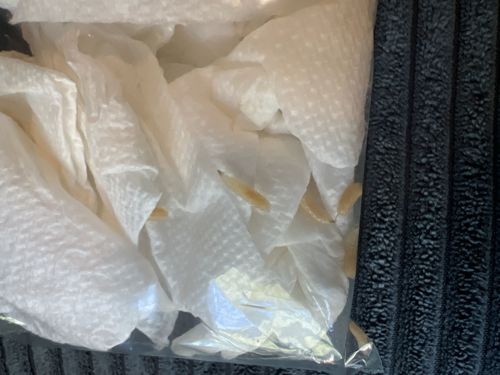Maggots (Fly larvae)
Scientific Name: Various species depending on the parent fly, e.g., Lucilia sericata (Common Green Bottle Fly), Calliphora vomitoria (Blue Bottle Fly), Musca domestica (House Fly)
Order & Family: Order Diptera (True Flies), often Calliphoridae (Blow Flies) or Muscidae (House Flies)
Size: Typically 3 mm to 25 mm (0.1 to 1 inch) in length, depending on species and larval instar.

Natural Habitat
Found in various environments where organic decay is present, including carcasses of dead animals, rotting fruit or vegetables, garbage, compost piles, and sometimes in wounds or decaying tissues of living organisms.
Diet & Feeding
Strictly detritivorous or necrophagous; they feed on decaying organic matter, carrion, decomposing plant material, or sometimes living tissue (e.g., in medical applications for debridement).
Behavior Patterns
Larvae develop in decaying organic matter or carrion, typically completing their larval stage in a few days to weeks depending on species and environmental factors (temperature, food availability). They are highly active feeders during this stage. Once mature, they will leave the food source to pupate in drier soil or substrate.
Risks & Benefits
Risks: Can be indicators of poor sanitation and spoilage of food. Some species can cause myiasis (infestation of living tissue) in animals and humans, leading to health issues. Benefits: Crucial decomposers in ecosystems, breaking down organic matter and recycling nutrients. Used in forensic entomology to estimate time of death by analyzing their developmental stages on carrion. Also used in medicine for maggot debridement therapy to clean necrotic tissue from wounds.
Identified on: 8/26/2025